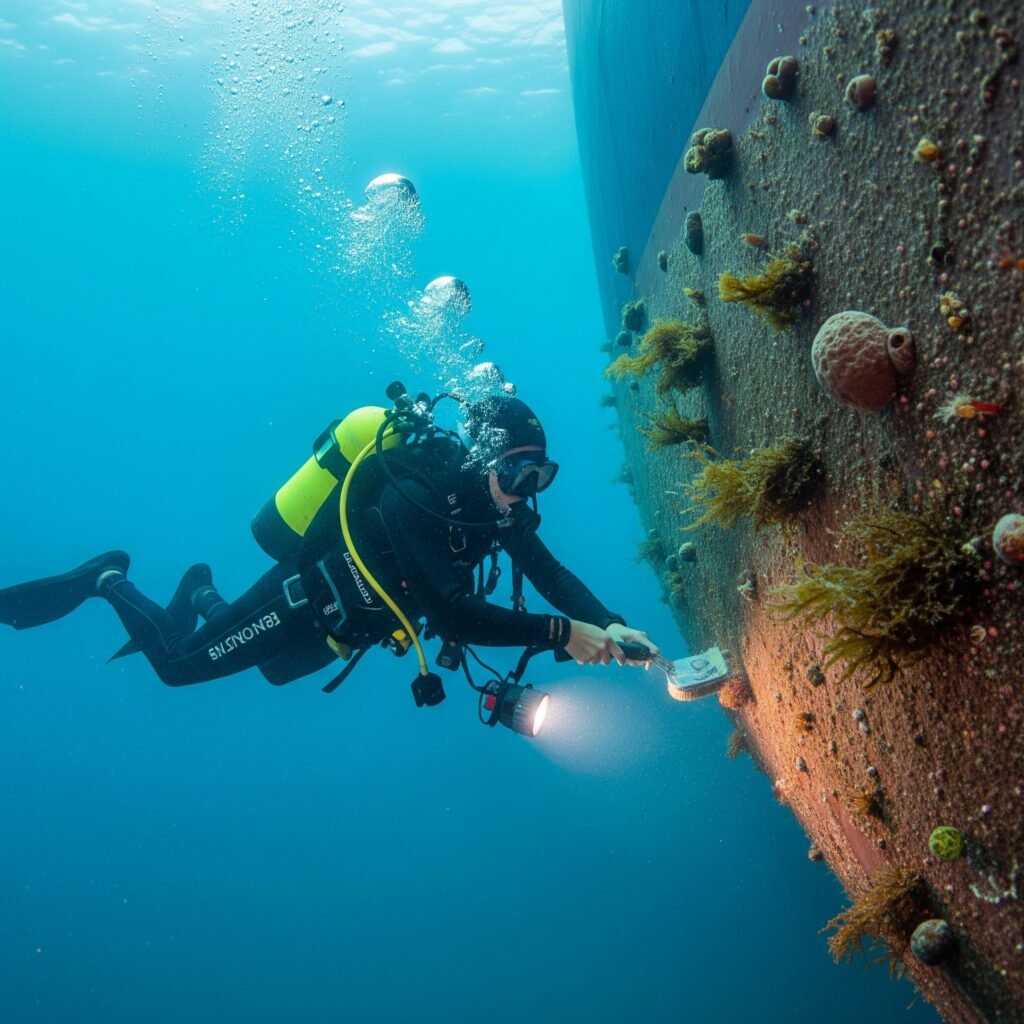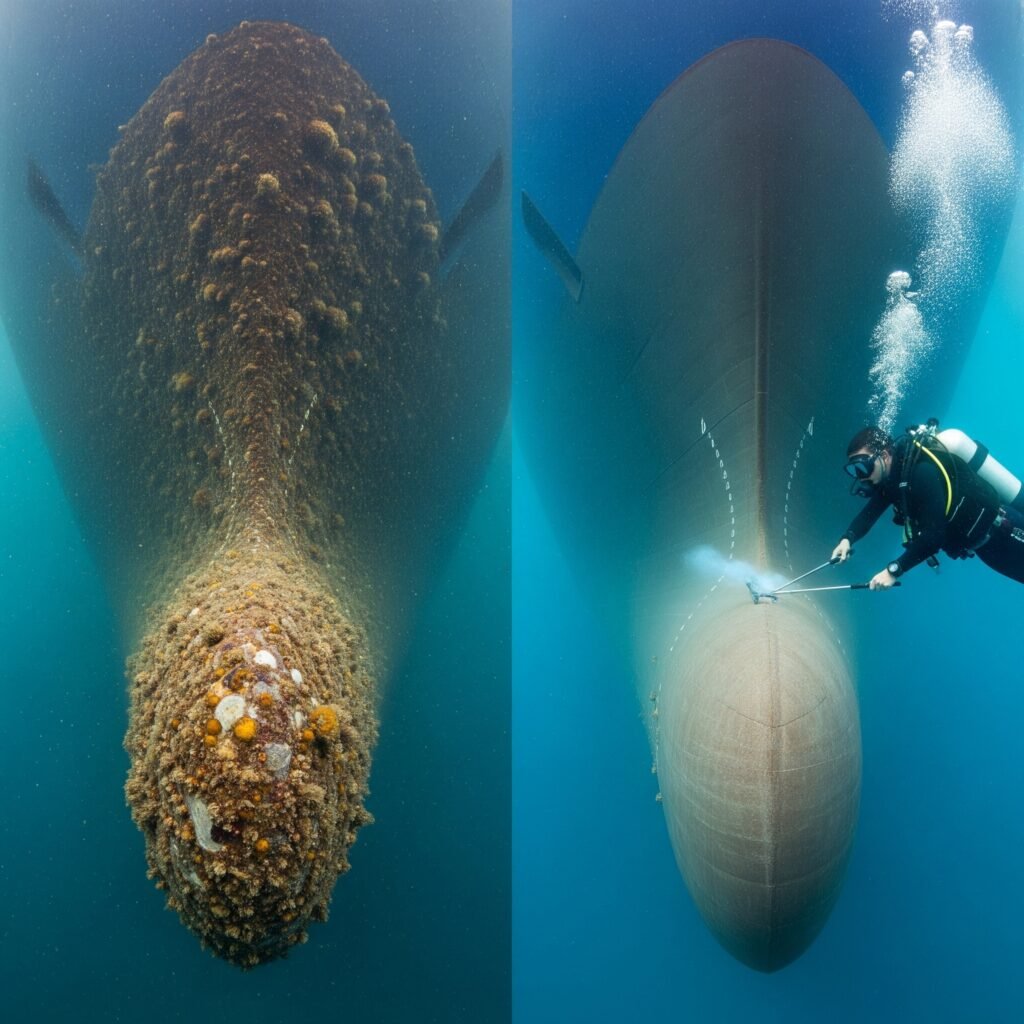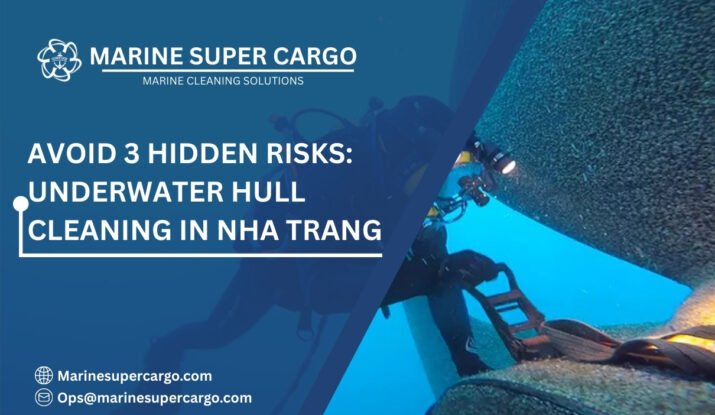When it comes to keeping your vessel in top shape, cruising the tropical waters of Nha Trang, underwater hull cleaning in Nha Trang is one of the smartest maintenance decisions you can make. Imagine your boat’s hull as the sleek hull of a speedboat slicing through calm waters—without regular cleaning, it becomes a barnacle fortress, slowing your voyage and burning extra fuel. In Nha Trang’s warm, nutrient-rich seas, fouling grows fast, turning a well-tuned craft into a lumbering beast if ignored. Let’s explore why professional underwater hull cleaning matters here, how it’s done, and how you can select the best service provider for results you can trust.
Why Underwater Hull Cleaning in Nha Trang is Essential
Nha Trang’s coastal environment provides ideal conditions for barnacles, algae, mussels, and slime to colonize submerged surfaces quickly. Such biofouling increases drag, decreases speed, and forces engines to burn more fuel. Prolonged fouling strips protective coatings, corrodes metal components, and can disrupt vital systems like propellers and water intakes. Maintaining a clean hull reduces operational costs, boosts performance, and helps vessels comply with Vietnam’s biodiversity conservation laws and international maritime standards.
The Marine Environment of Underwater Hull Cleaning in Nha Trang and Its Fouling Challenges
Situated on the South China Sea, Nha Trang enjoys warm water temperatures year-round, along with seasonal nutrient inflows and tidal currents. These contribute to rapid fouling growth, especially on vessels that remain stationary or slow-moving. Salinity gradients and sediment disturbance further influence fouling species diversity and adhesion strength, posing specific challenges that require tailored underwater cleaning strategies.

Consequences of Neglecting Hull Cleaning
Ignoring your hull’s underwater condition leads to:
- Increased fuel consumption—sometimes by as much as 20%
- Significant speed loss and reduced maneuverability
- Accelerated hull coating deterioration and corrosion
- Mechanical system failures caused by blocked intakes and fouled propellers
- Regulatory fines or port entry denial due to biofouling control violations
- Unexpected repair costs and extended downtime
The Step-by-Step Process of Underwater Hull Cleaning in Nha Trang
Dive Preparation and Safety Protocols
Professional cleaning teams assess water clarity, currents, tides, and vessel condition before diving. Safety measures include equipment checks, communication protocols, emergency planning, and coordination with harbor authorities to ensure secure operations in Nha Trang’s busy waters. Given the area’s active port activity and environmental sensitivities, adherence to international standards such as those outlined in the MARPOL Convention ensures that diving operations are not only safe but also environmentally responsible and globally compliant.
Tools, Techniques, and Technologies Used
Modern methods involve:
- Soft rotary brushes and scrapers that protect hull coatings
- Hydraulic jetting systems for stubborn fouling
- Remotely operated submarines (ROVs) and CCTV for inspections
- Filtration and debris capture to protect the marine environment
- Additional services like propeller polishing and anode maintenance
Choosing a Professional Service of Underwater Hull Cleaning in Nha Trang
Certifications, Experience, and Local Expertise
- Verify diver certification and company compliance with Vietnamese maritime regulations
- Look for providers with expertise specific to Nha Trang’s fouling conditions
- Seek transparent reporting protocols and client testimonials
- Ensure the use of environmentally approved cleaning materials and techniques
Recommended Cleaning Frequency for Vessels in Nha Trang
Most vessels benefit from cleaning every 1 to 3 months, depending on vessel type, activity, and seasonal fouling rates. Higher frequency is advised during warmer months or periods of inactivity.
Environmental Regulations and Sustainable Cleaning Practices
Vietnamese authorities mandate hull cleaning, waste containment, and avoidance of invasive species spread. Licensed providers follow strict protocols for debris capture and disposal, use eco-friendly cleaning agents, and report any invasive species found during cleaning activities. These practices are vital not only for regulatory compliance but also to safeguard the health of Vietnam’s coastal and marine environments. By aligning with global standards such as those outlined by the International Maritime Organization (IMO), these measures help reduce biosecurity risks and promote sustainable maritime operations throughout the region.
Cost Expectations for Underwater Hull Cleaning in Nha Trang
Costs generally range from USD 6 to 14 per linear foot, influenced by hull size and fouling severity. Additional services such as underwater inspections or propeller polishing may increase costs but offer added value.
DIY vs. Professional Hull Cleaning: Pros and Cons
While DIY hull cleaning may seem cost-effective, professional cleaning services offer superior safety, regulatory adherence, and cleaning quality. Professionals ensure no hull damage, maintain environmental compliance, and provide necessary documentation.
Benefits of Regular Hull Cleaning: Efficiency, Longevity, and Compliance
Routine hull cleaning translates to:
- Significant fuel savings through reduced drag
- Higher vessel speed and better handling
- Extended life of antifouling coatings and hull structures
- Compliance with environmental laws, avoiding penalties
- Early detection of hull damage or mechanical issues

Real Experiences from Nha Trang Mariners
Mariners across Nha Trang commend professional hull cleaning services for improved vessel speed, fuel cost savings, and reduced maintenance downtime. Commercial operators particularly appreciate the operational predictability fostered by regular cleaning schedules.
Conclusion:
Underwater hull cleaning in Nha Trang is an investment that pays dividends in performance, cost savings, and environmental responsibility. By partnering with certified local experts who understand regional fouling challenges, you can maintain a clean hull, reduce operating costs, and enjoy safer, smoother navigation through Nha Trang’s vibrant maritime environment.
FAQ:
Q1. How often should I schedule underwater hull cleaning in Nha Trang?
Typically, every 1 to 3 months, depending on fouling rates and vessel usage patterns.
Q2. Are hull cleaning methods environmentally safe in Nha Trang?
Yes, certified operators comply with strict environmental guidelines, including debris capture and use of eco-friendly cleaning agents.
Q3. What is the typical cost for underwater hull cleaning in Nha Trang?
Expect prices between USD 6 and 14 per foot, varying with vessel size and fouling level.
Q4. Can I clean my hull myself underwater in Nha Trang?
DIY is generally unsafe and not compliant with local regulations; professional cleaning is recommended.
Q5. What performance benefits do I gain from regular hull cleaning?
Reduced drag, lower fuel consumption, longer hull life, improved speed and maneuverability, and regulatory compliance.


